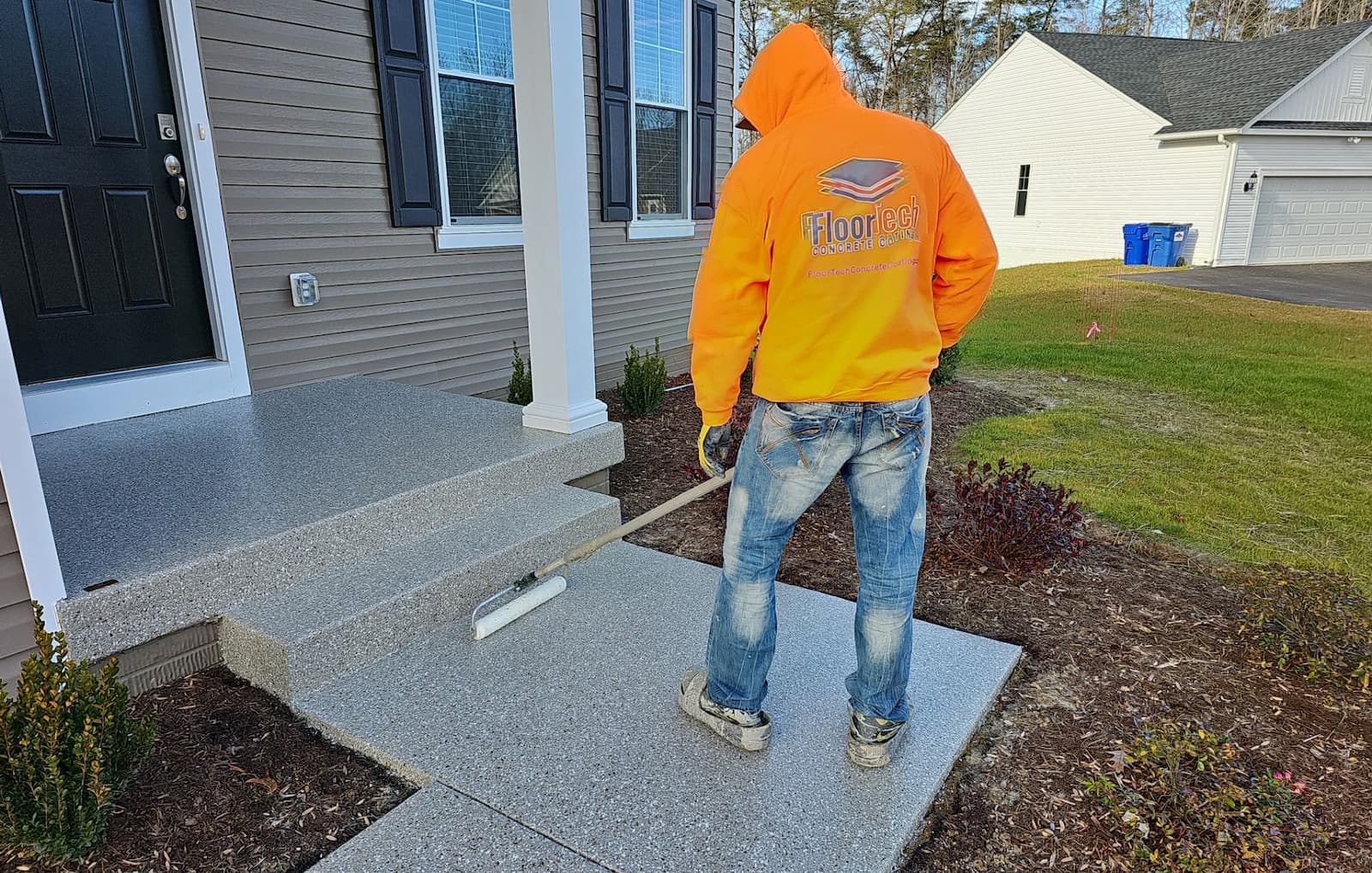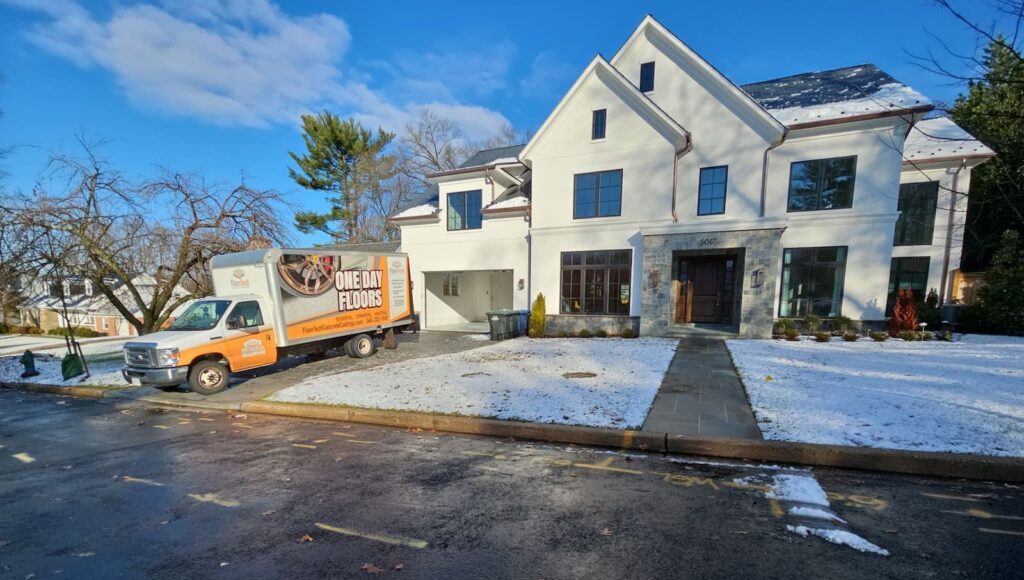When selecting concrete coatings for a project, understanding how different materials react to various environmental conditions is crucial. This is especially true in extreme climates, where the wrong choice can lead to premature deterioration. In this guide, we delve into the comparative resilience of polyurea and epoxy coatings in extreme weather conditions. Factors such as temperature fluctuations, UV exposure, and humidity levels can drastically affect the performance and longevity of these coatings. Polyurea, with its superior flexibility and thermal stability, tends to outperform epoxy in such challenging environments. Additionally, the chemical composition of polyurea gives it an edge in resistance to wear and tear, making it a more reliable choice for areas subjected to harsh weather patterns.
Setting the Stage – The Importance of Climate-Resilient Coatings
Climate resilience in concrete coatings isn’t just about longevity; it’s about safety, appearance, and cost-effectiveness. Extreme temperatures can wreak havoc on coatings, causing them to crack, peel, or degrade prematurely. Choosing a coating that can withstand these conditions is essential for the integrity and longevity of the surface. In addition, resilient coatings help maintain the aesthetic appeal of the space, preventing discoloration and fading caused by UV exposure and temperature extremes. Safety-wise, a stable coating minimizes the risk of accidents due to surface breakdown, such as chipping or becoming slippery. From a cost perspective, investing in a durable coating minimizes the need for frequent repairs or replacements, offering better long-term financial savings.
Understanding Polyurea and Epoxy Coatings
Before diving into their performance in extreme climates, let’s understand what polyurea and epoxy coatings are. Polyurea is a synthetic polymer known for its fast curing time and exceptional durability. It is often chosen for its ability to form a strong, continuous membrane that effectively seals surfaces against moisture and chemical spills. Epoxy, a resinous material, is also durable but has a longer curing time and is less flexible than polyurea. This makes epoxy more prone to cracking, especially in conditions where the substrate may expand or contract. Additionally, polyurea’s resistance to UV radiation and temperature extremes gives it an advantage in outdoor or variable climate applications, where epoxy might degrade more quickly.

Polyurea in the Heat – Surviving High Temperatures
In hot climates, polyurea’s ability to withstand high temperatures stands out. Unlike epoxy, which can soften and become less effective in extreme heat, polyurea maintains its structural integrity. This resistance to heat ensures that polyurea-coated surfaces do not become tacky or deform under the sun, a common problem with epoxy in high-temperature environments. This quality makes polyurea ideal for use in areas like the Middle East or industrial sites where temperatures soar. Additionally, its tolerance to high temperatures extends to its color and finish, which are less likely to fade or discolor due to sun exposure. This enduring aesthetic appeal is particularly beneficial for public and commercial spaces that require long-lasting visual quality in addition to functional durability.
Polyurea in the Cold – Withstanding Freezing Conditions
Polyurea’s performance in cold climates is equally impressive. It remains flexible and doesn’t crack in freezing temperatures, a common issue with epoxy coatings. This flexibility ensures that the coating can expand and contract with the substrate without losing its integrity, making it ideal for outdoor applications in regions with severe winter conditions. This property is particularly beneficial in regions with severe winters or in cold storage facilities where consistent performance at low temperatures is essential. Additionally, polyurea’s resistance to moisture and ice prevents water infiltration, which can be a significant problem in colder climates where freeze-thaw cycles are frequent. This makes polyurea a reliable choice for maintaining the safety and functionality of surfaces in environments that are subjected to extreme cold.

Comparing Epoxy’s Performance in Extreme Climates
Epoxy, while robust under normal conditions, shows its limitations in extreme climates. It can become brittle and crack in cold weather and soften or even peel in high heat. These limitations pose a significant problem for longevity and functionality.
Longevity and Maintenance – A Comparative Analysis
Over time, polyurea’s ability to withstand extreme temperatures leads to lower maintenance costs and a longer lifespan compared to epoxy. This durability translates to cost savings and less frequent need for repairs, making polyurea a more economical choice in the long run.
Real-World Applications and Testimonials
Businesses and municipalities that have opted for polyurea in extreme climates report positive outcomes. For instance, a parking lot coated with polyurea in a desert climate showed no signs of degradation even after years of exposure to scorching temperatures. Similarly, a cold storage facility in a northern region praised polyurea for its enduring flexibility and crack resistance.
Coatings that will Stand the Test of Time & Weather
In extreme climates, the choice between polyurea and epoxy can significantly impact the longevity and performance of concrete coatings. Polyurea’s superior resilience to both high and low temperatures makes it the optimal choice for ensuring durability and reducing maintenance needs. When planning your next project, consider the environmental conditions and opt for a coating that will stand the test of time and weather.

